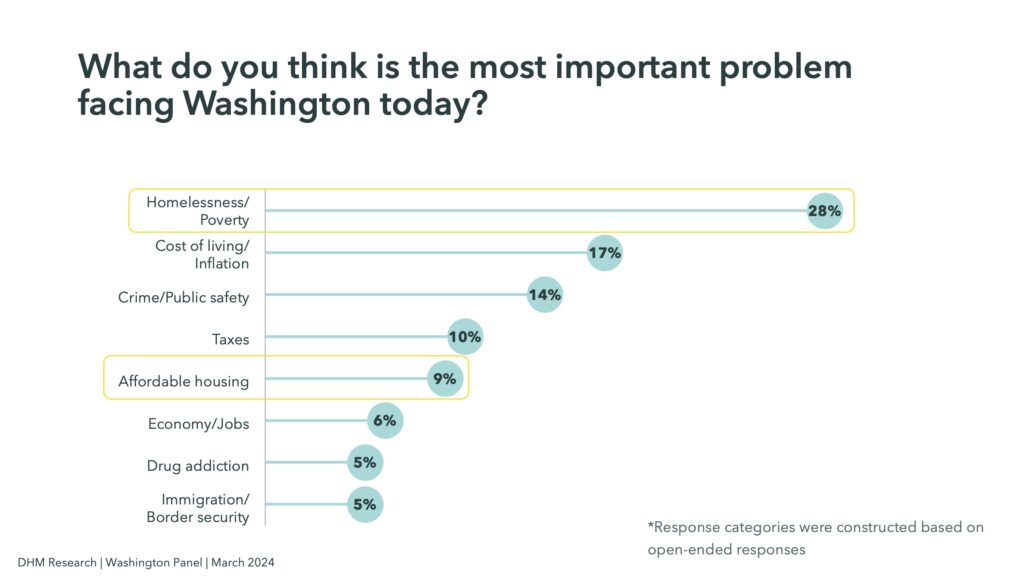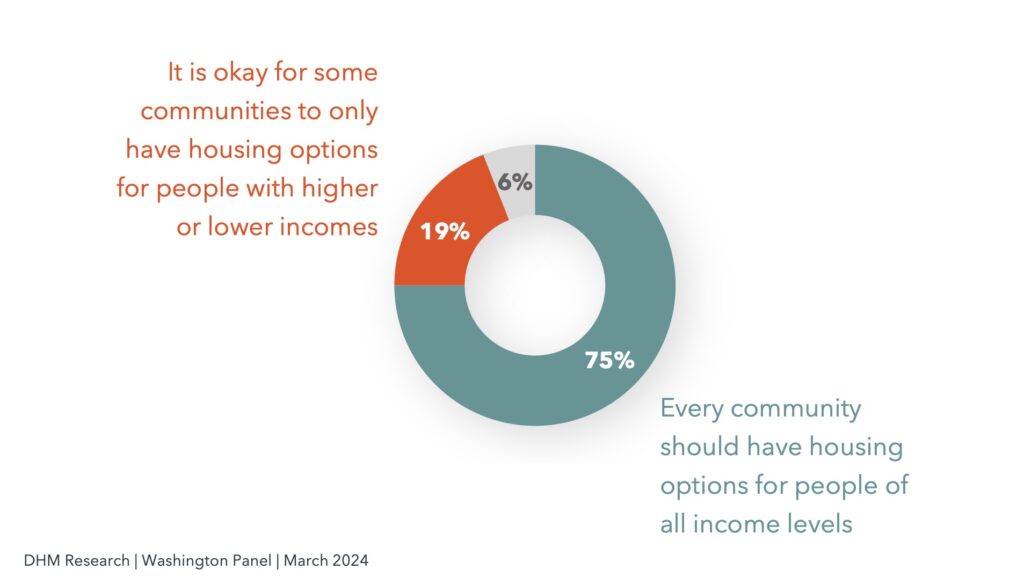High housing costs and their downstream impacts continue to be top of mind for Washingtonians. According to DHM’s most recent statewide survey in Washington, 28% of respondents believe that homelessness and poverty are the most critical problems facing the state. Additionally, 45% express concerns about worsening economic conditions, while 62% worry about their personal financial situations. With these economic issues and the current housing market, there is a nationwide struggle to afford housing according to the Pew Research Center. Owning a home remains a part of the American Dream for 74% of the population, but it is an unattainable dream for many.

Housing affordability is a major concern for many Washingtonians.
A 2023 report from the Washington Department of Commerce, which predicts that Washington will need to build over 1 million units of housing over the next 20 years, finds that the state is already experiencing a housing shortage. The housing situation described in that report is reflected in DHM’s data. Overall cost of housing and the lack of affordable places to live across communities are both major concerns in Washington. A large majority (75%) believe there should be housing options in each community that are affordable for individuals across all income brackets, rather than some communities catering to higher or lower income individuals. Nevertheless, concerns persist regarding the trajectory of housing prices, with 65% predicting continued escalation regardless of whether the housing supply increases. To help communities move in the right direction, 79% of respondents believe that state and local authorities should actively address housing affordability.

Visible homelessness impacts the feeling of safety within communities across Washington.
Academic research suggests that high housing costs are the leading driver of homelessness in the United States. Homelessness has all kinds of impacts across communities. For example, the issue of homelessness in Washington significantly influences the sense of safety within communities. A notable 16% of individuals identify homelessness as the primary factor affecting their feelings of safety. Moreover, 71% assert that the visibility of homelessness in their communities directly correlates with their perceived level of safety.
Washingtonians have varied opinions on the causes of and solutions for homelessness.
When it comes to why we have homelessness in our communities and how to address it, opinions diverge regarding its root causes and potential solutions. While 51% attribute homelessness primarily to mental illness and drug addiction, 40% emphasize the lack of affordable housing. Older demographics are more inclined to view mental health and substance abuse as primary contributors to homelessness. Despite the challenges, there’s optimism regarding the impact of potential solutions for homelessness, with 62% expressing confidence in the effectiveness of the right policies and resources. Of the various proposed solutions in the survey, improving access to mental health and drug treatment programs over the next decade was the most popular solution, chosen by 43% of respondents.
